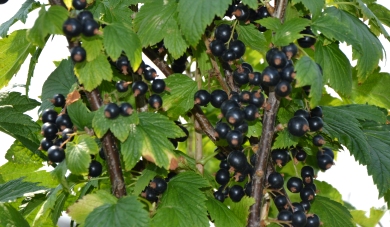 CURRANT
CURRANT
Currant is one of the most valued fruit shrubs. The vitamins and minerals found in these fruits in relatively large amounts are of great importance for human health. Currants can be eaten fresh, but they are also great raw materials for the production of preserves, compotes, Juices, jellies and jams and frozen foods that provide the human body with the necessary minerals and vitamins, also in winter. Black currant fruits are superior to citrus in terms of vitamin C content (lemons contain (in 100 g) from 45 into 50 mg of this vitamin, and black currant about 140 Mg). Organic acids are also of great importance in the diet, which are found in currants, in the amount of approx 2,1%. The content of pectic compounds, valued in the production of jellies and other preserves, is determined in black currants more or less at 1,1%, in red – on 0,6%. The content of these components is subject to strong fluctuations in terms of weather (insolation, rainfall) and soil, and the fertilization used, or even plant protection products. Besides, there are differences between the varieties and therefore it is not indifferent, what variety is chosen for cultivation.
Cultivated varieties of currants grow to a height 2 m. Their root system is very well developed. Roots grow to a height 150 Cm, however, most of them grow flat in the topsoil. Currant bushes have an upright habit, spherical and spreading. Main shoots emerge from the root collar or from the root. They are green to brown in color. Currant bushes live up to 20 lat, bear fruit best until 15 lat. The fruit of the currants is a berry, the size of which varies within 0,5-1 Cm. In terms of color, we distinguish between fruits: White, yellowish, pink, Red, dark red and black. Their growing season begins very early, at the earliest, they "start” black currants, then red, white at the latest. They bloom – simultaneously with leaf development – in the first or second decade of April, depending on the weather. Black currants are not resistant to spring frosts and therefore often give little yields. Currants bear fruit in 2-3 one year after being planted permanently, and they reach the full harvest in v 5-7 year. Black currants usually bear fruit on long shoots, and red and white on shoots, that are alive 3-4 lata. In general, currants are resistant to low temperatures and rarely freeze in cold winters. Black currants are the least resistant.